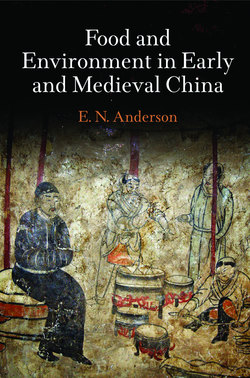Food and Environment in Early and Medieval China

Реклама. ООО «ЛитРес», ИНН: 7719571260.
Оглавление
E. N. Anderson. Food and Environment in Early and Medieval China
Отрывок из книги
Food and Environment
in Early and Medieval China
.....
Kwang-chih Chang (2002a) pointed out that early China shared with Native American cultures a basic sense of continuity between humans and the rest of the cosmos—animals, plants, hills, stars. This was a concept that the Chinese themselves discussed with words like “harmony” (he) and “resonance.” The West, in his view, committed itself to a rupture not only between people and nature but also between people and the gods. This he traces back to ancient Sumer (K.-c. Chang 2002). Chang rather exaggerates—I believe for effect—but the difference is real—and critically important. Any lingering doubts about the importance of the idea of continuity were removed when Mao imported to China the quintessentially Western idea of struggling against nature. Within a few decades, China had devastated an environment that five millennia of imperfect but concerned management had at least partially preserved (E. Anderson 2012; Marks 2012).
Even this case, however, was not open-and-shut. The West is not wholly anti-nature, and China was certainly not environmentally perfect. The West has Celtic poetry, Renaissance botany, and the conservation movement to remind us of our intimate connections with nature. China has its love of the “heat and noise” (renao) of cities and its fear of wild beasts to balance the poetic love of “mountains and water” (shanshui) that define so much of its art. How much the very real difference prevails, and how and why it matters, is a question for serious investigation.
.....